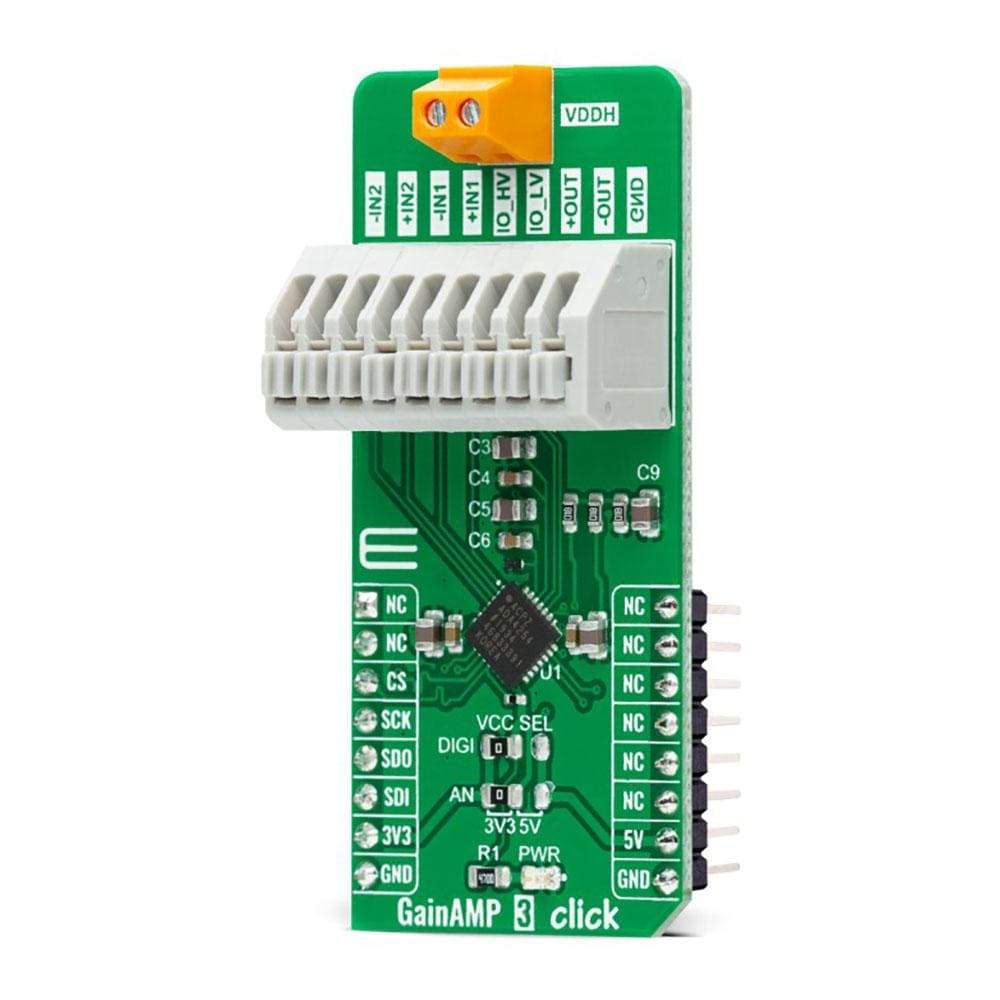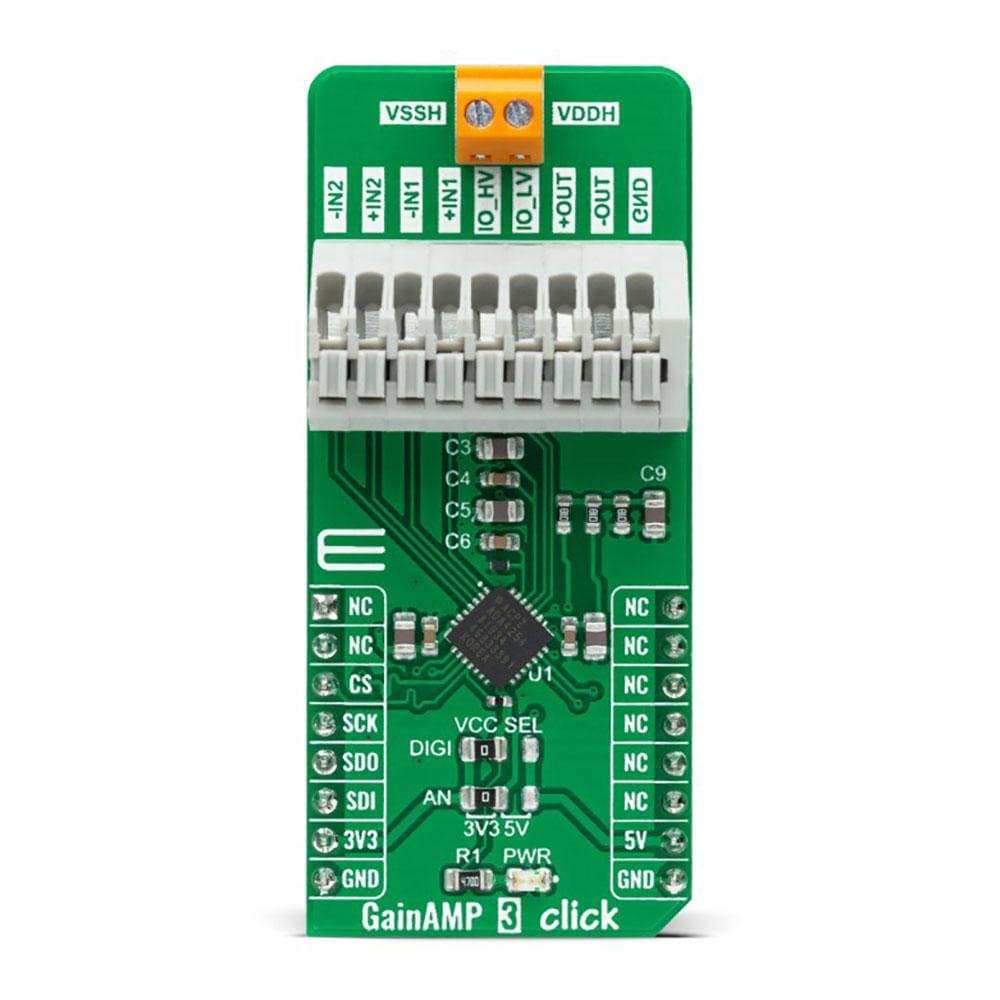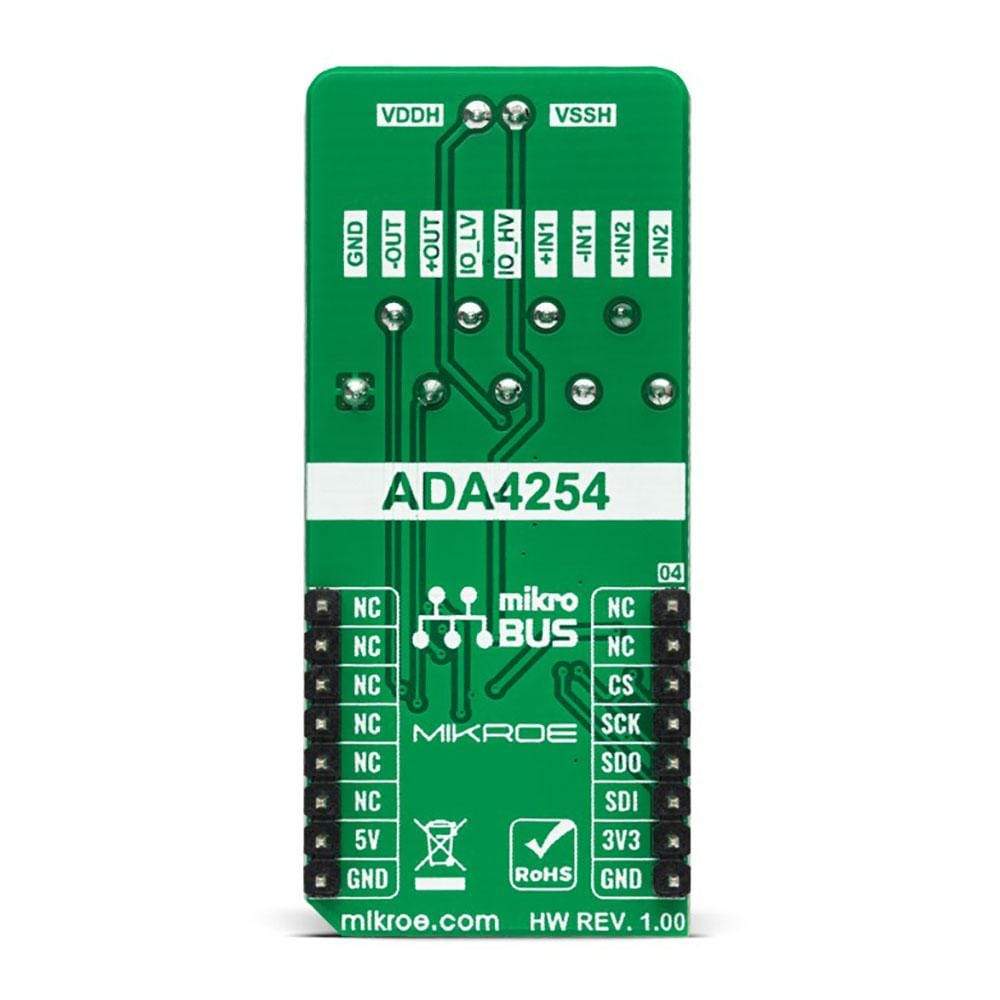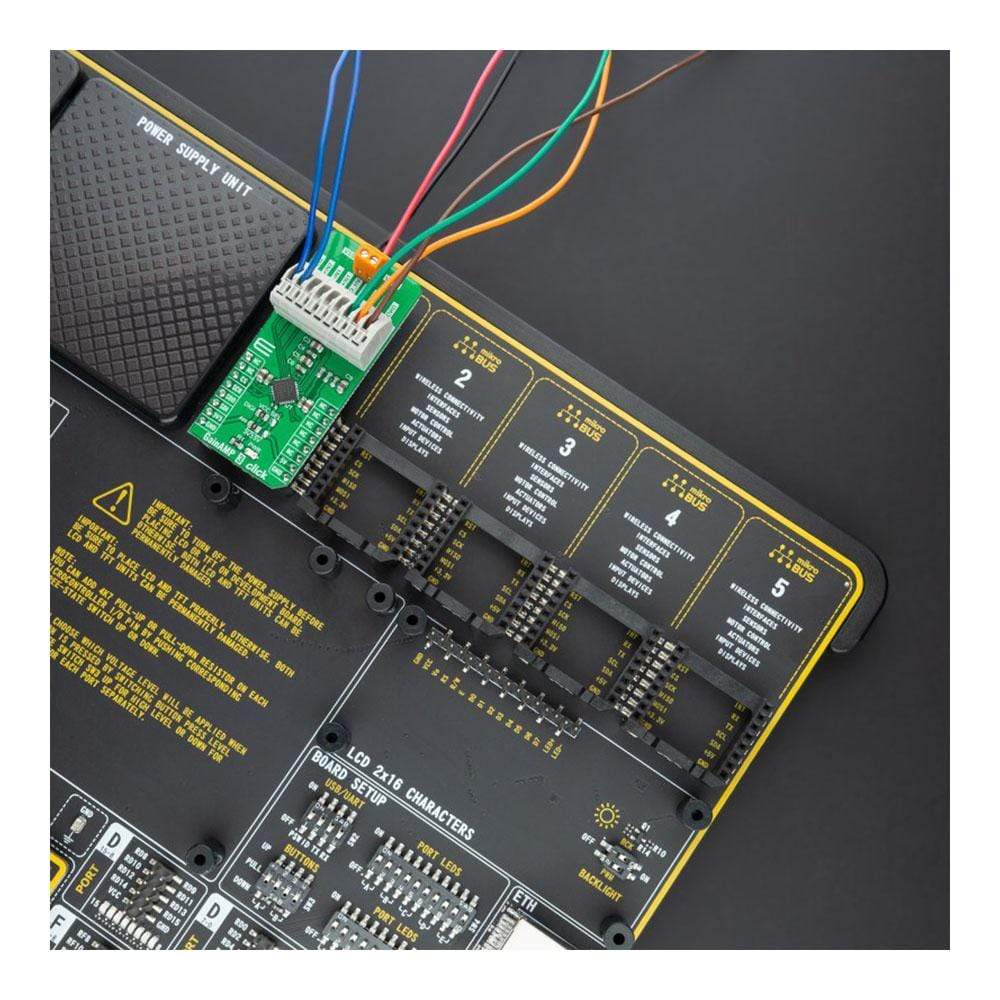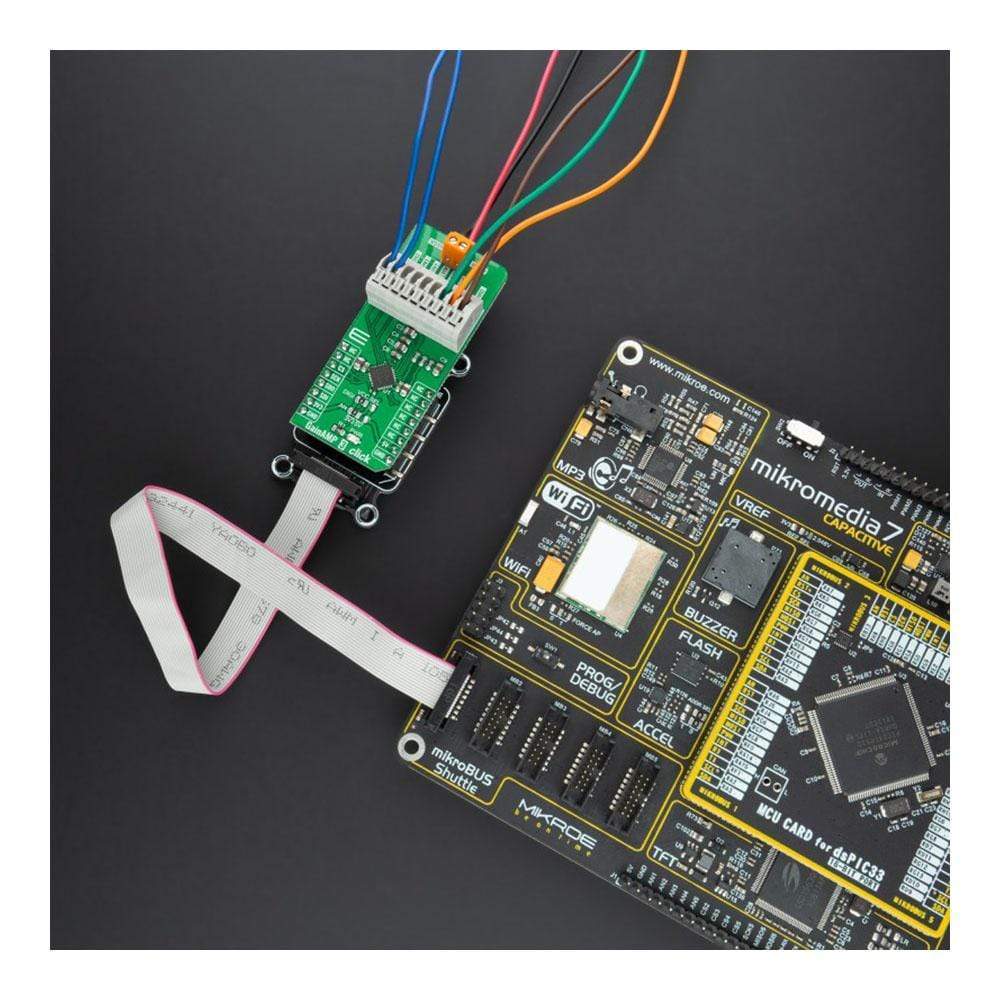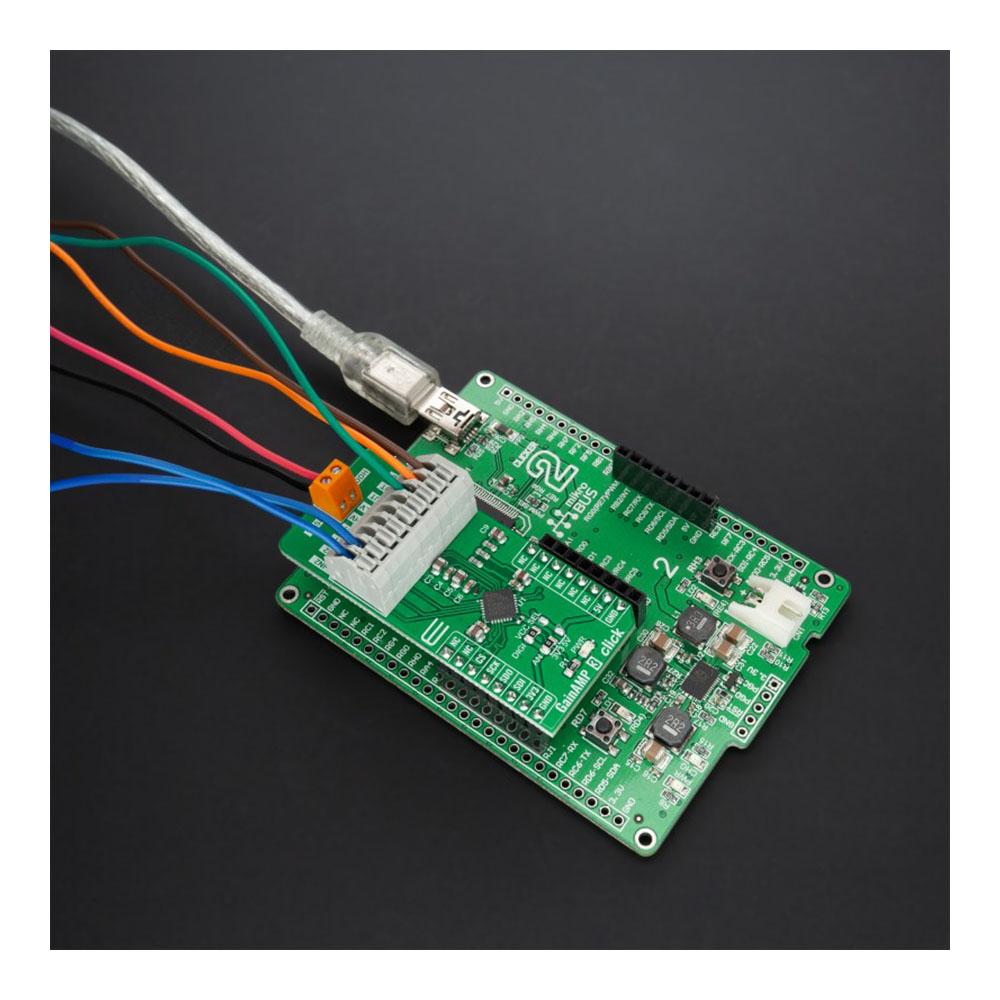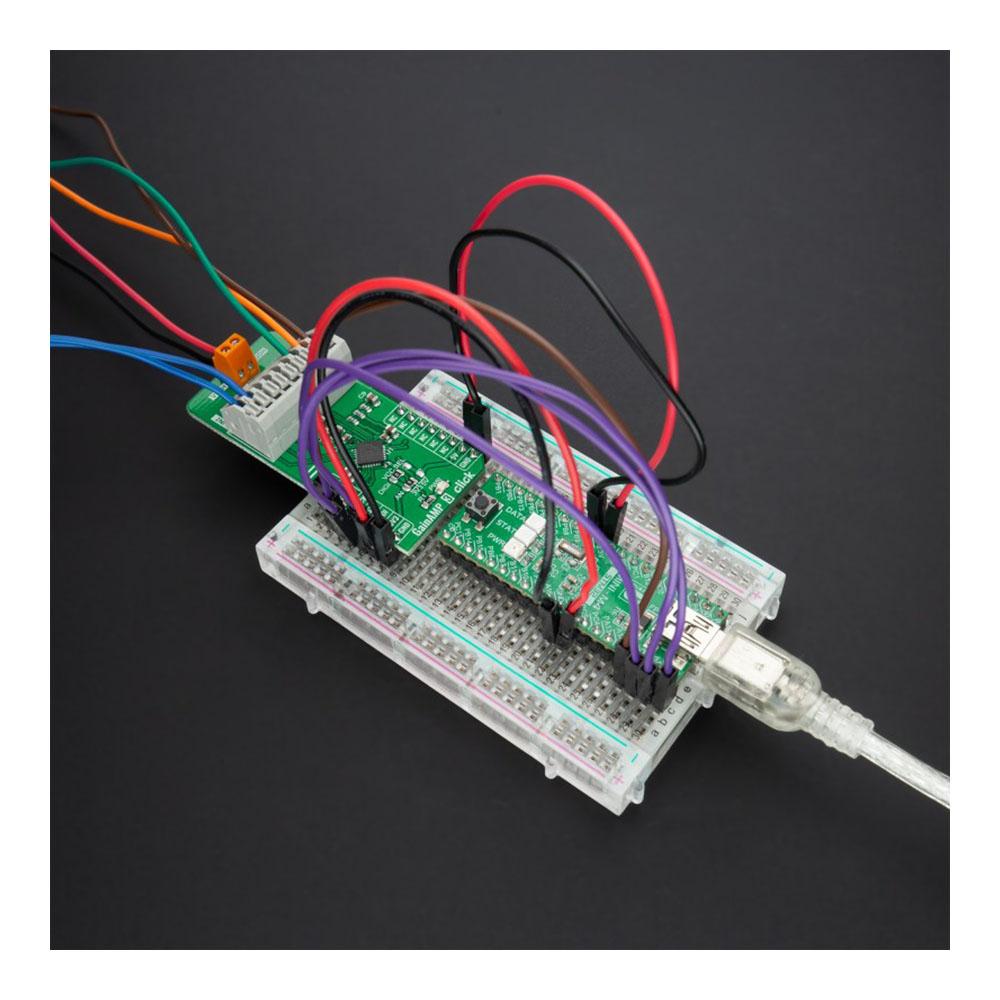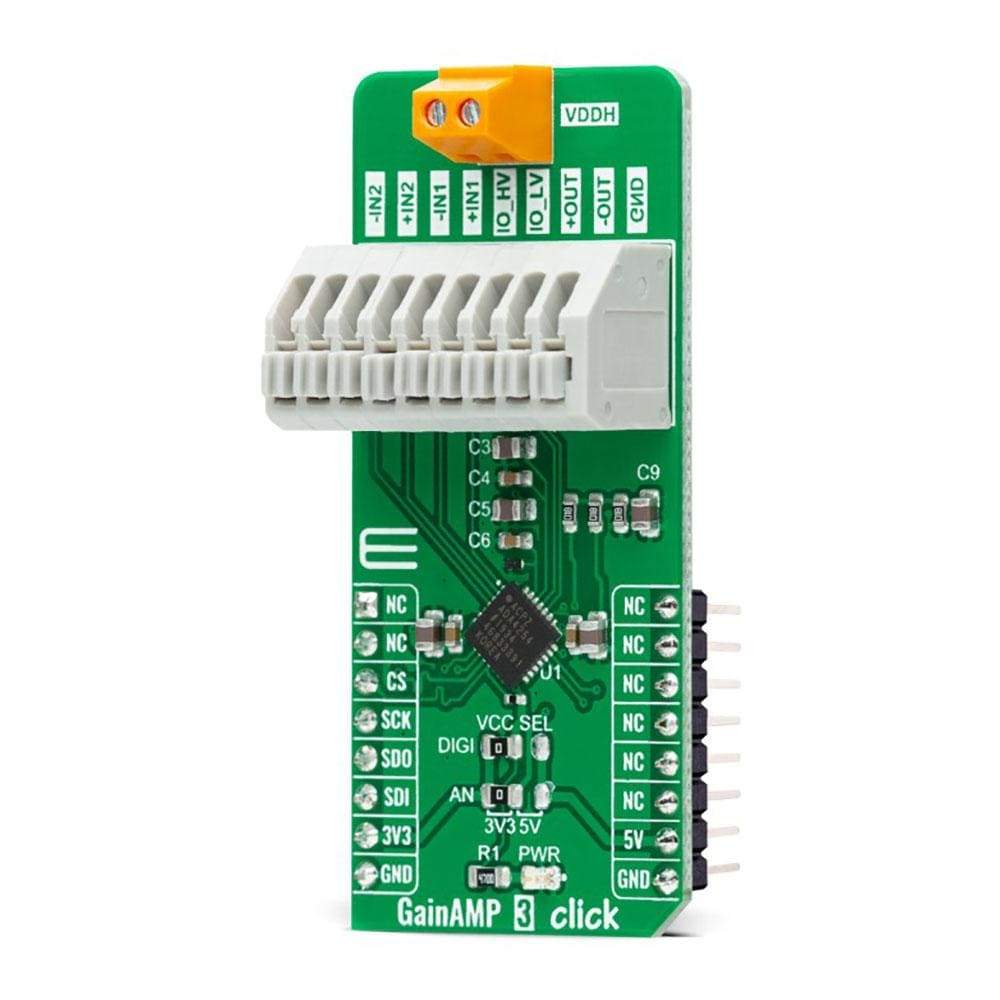
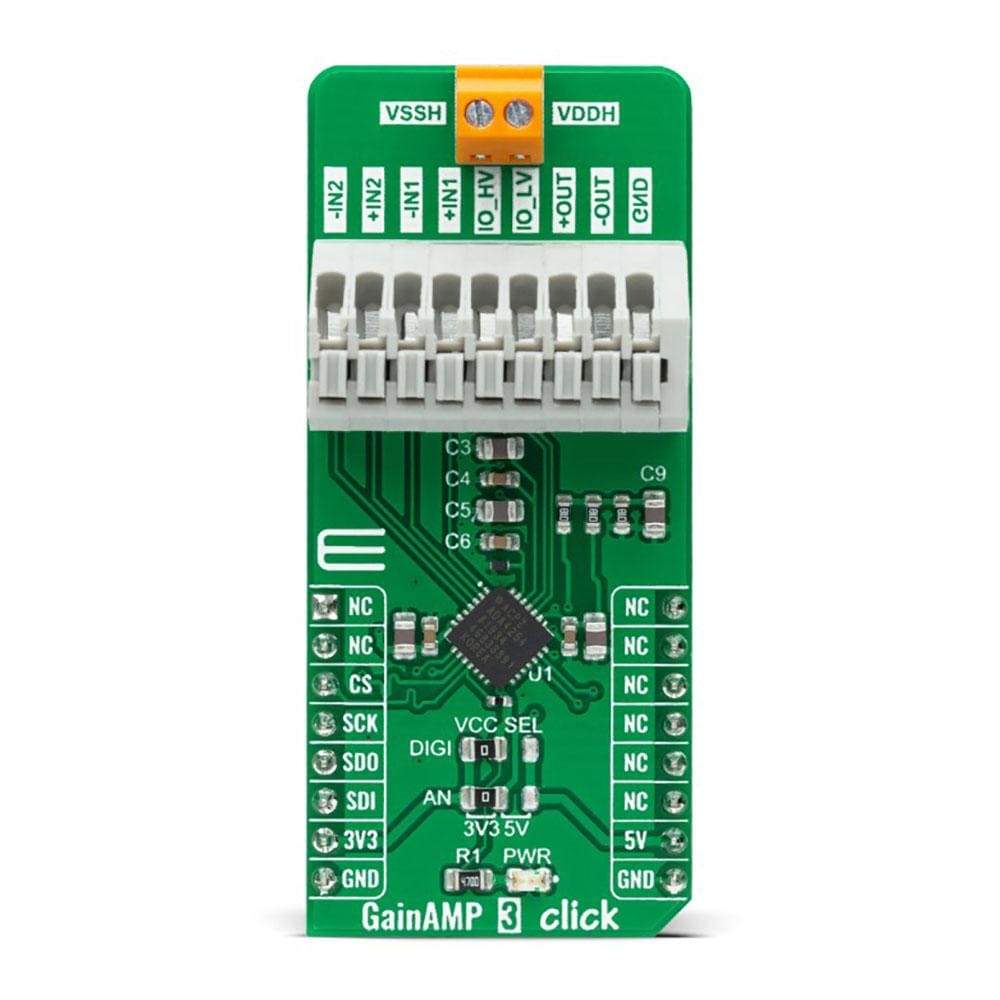
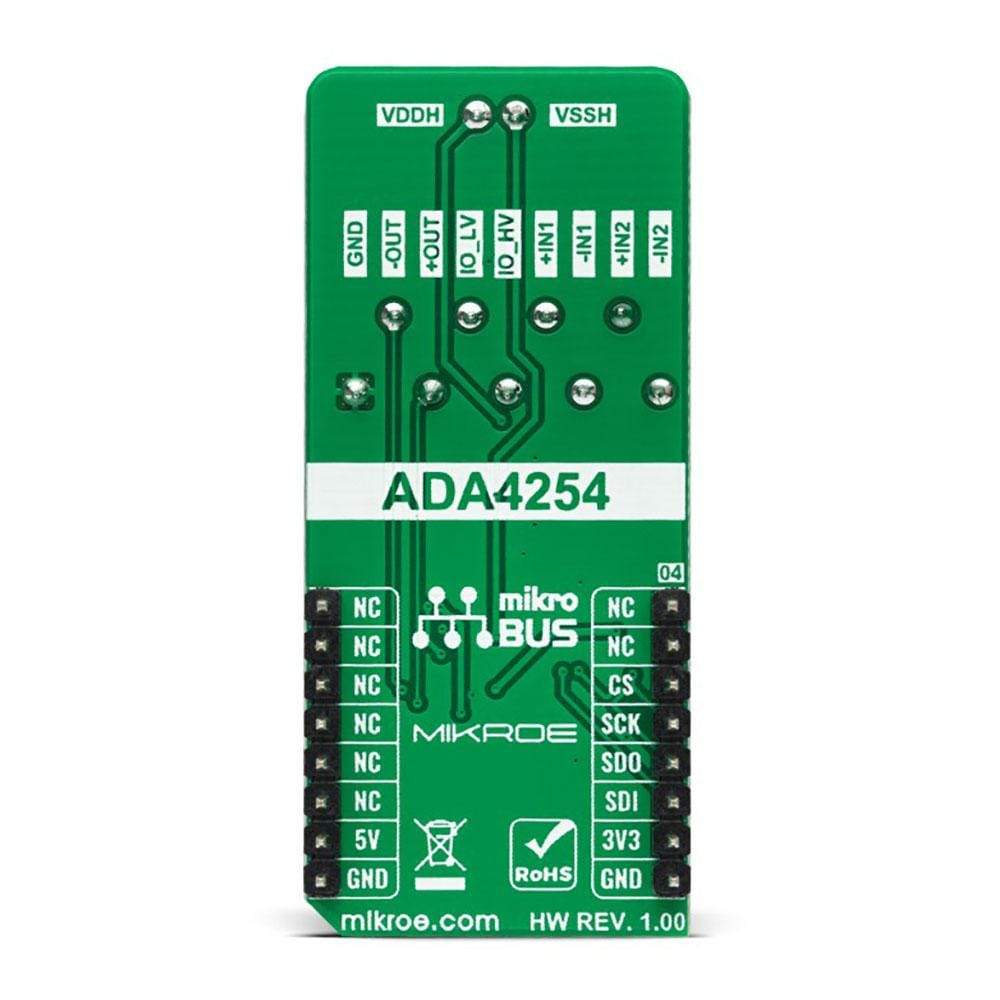
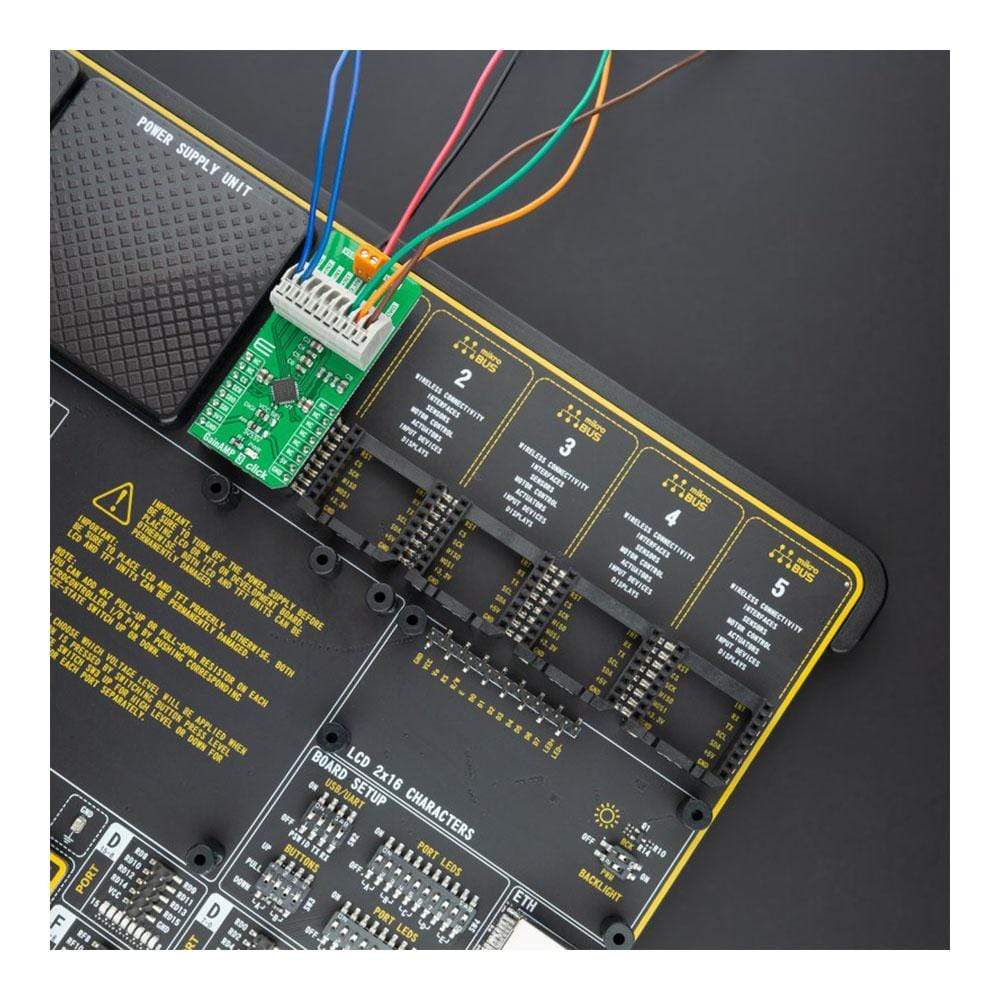
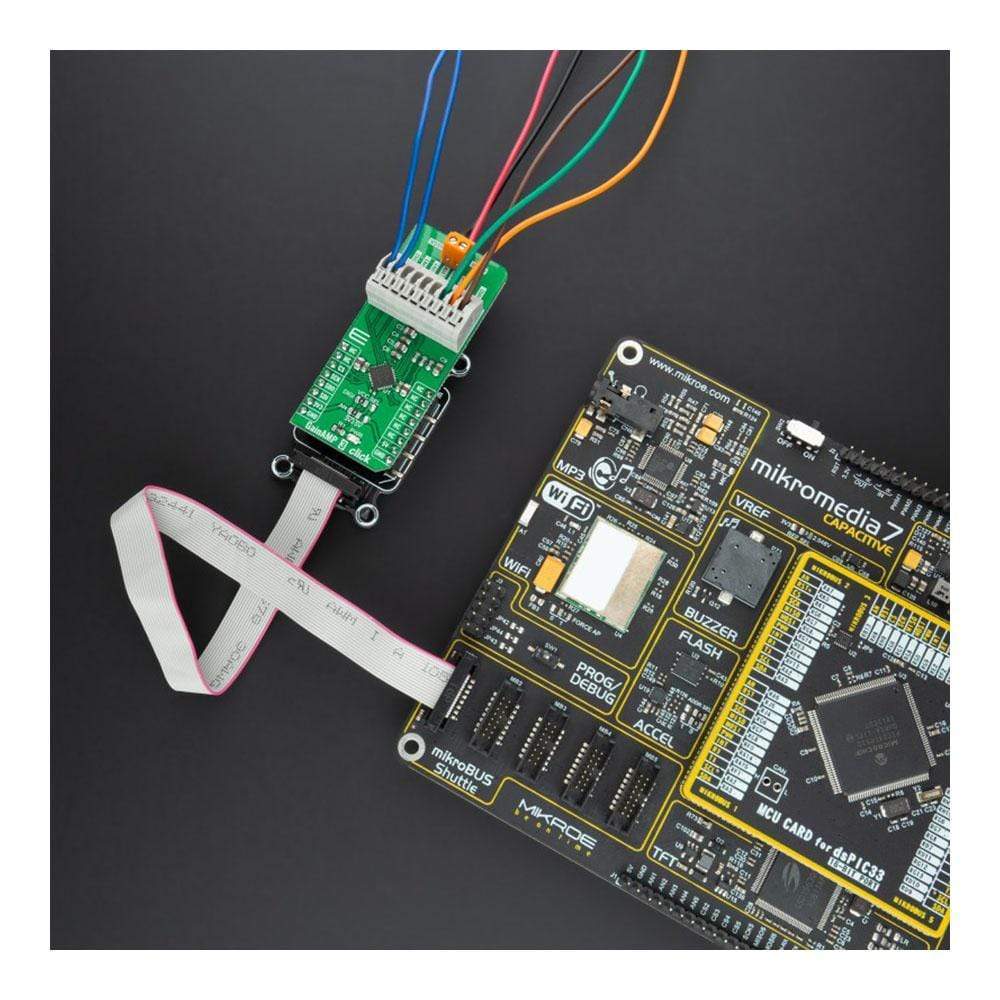
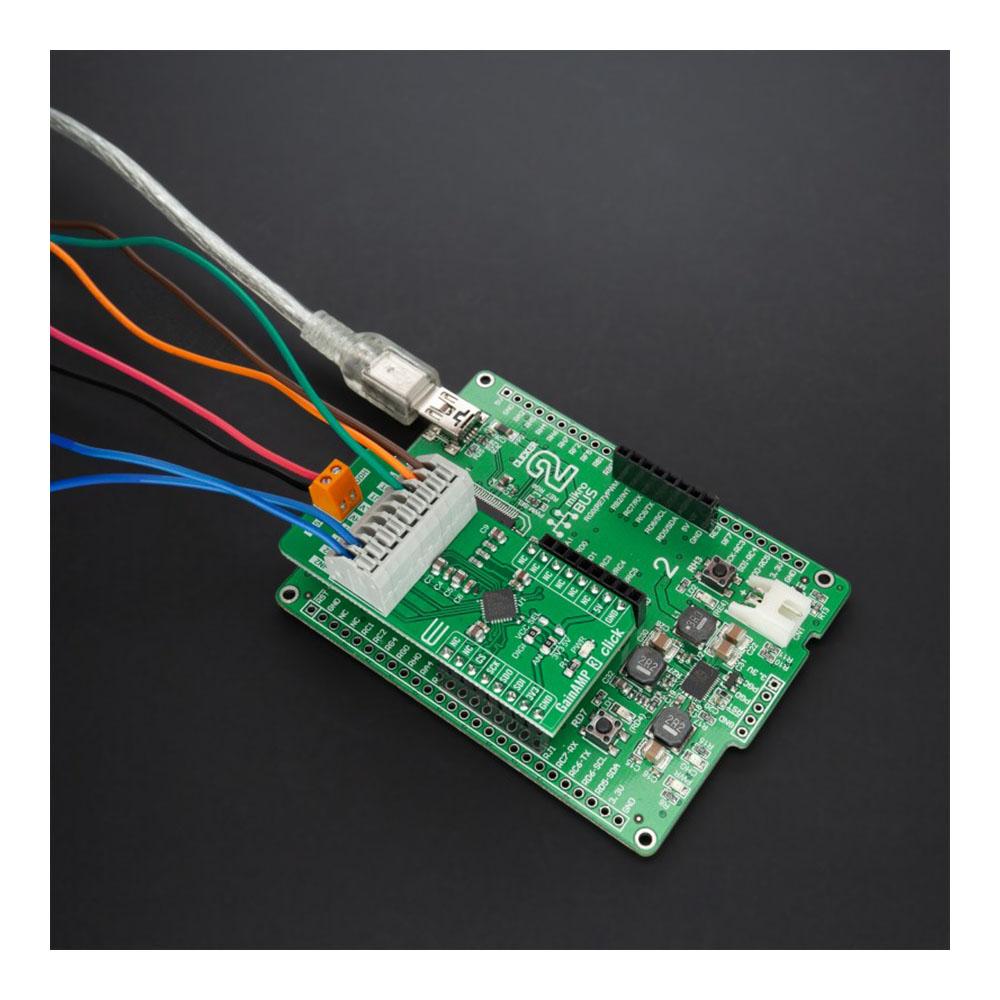
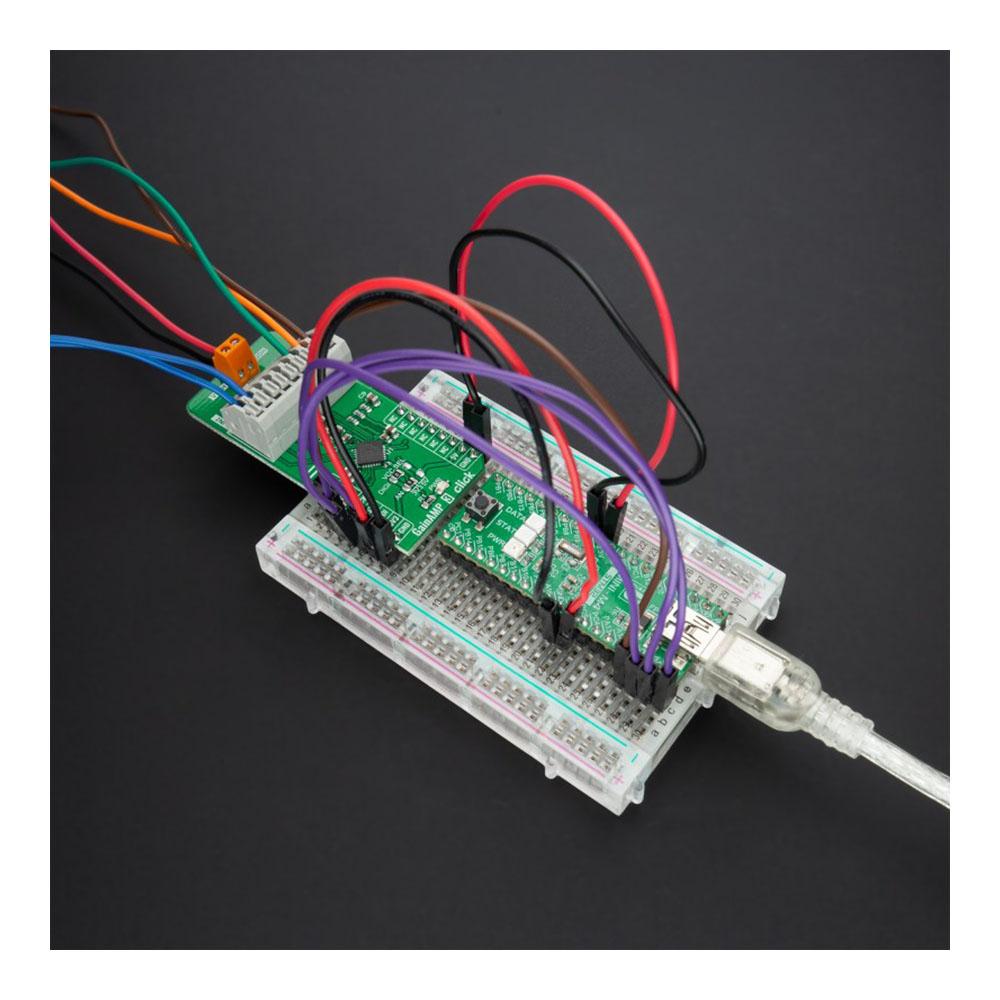
Overview
The GainAMP 3 Click Board™ is a compact add-on board that contains a 4-channel programmable gain amplifier. This board features the ADA4254, a zero drift, high voltage, programmable gain instrumentation amplifier from Analog Devices. It features 12 binary weighted gains and three scaling gain options resulting in 36 possible gain settings. It comes with an input multiplexer providing ±60V protection to the high impedance inputs of the amplifier and an excitation current source output available to bias sensors such as resistance temperature detectors (RTDs). The ADA4254 zero-drift amplifier topology self-calibrates DC errors and low-frequency noise, achieving excellent DC precision over the entire specified temperature range, maximizing dynamic range, and significantly reducing calibration requirements in many applications.
The GainAMP 3 Click Board™ represents a perfect choice for industrial systems and process control that demand precision, robustness, and low power, thanks to its low power consumption.
Downloads
Le Carte à clic GainAMP 3™ est une carte complémentaire compacte qui contient un amplificateur à gain programmable à 4 canaux. Cette carte comprend l'ADA4254, un amplificateur d'instrumentation à dérive nulle, haute tension et à gain programmable d'Analog Devices. Il dispose de 12 gains pondérés binaires et de trois options de gain de mise à l'échelle résultant en 36 réglages de gain possibles. Il est livré avec un multiplexeur d'entrée fournissant une protection de ±60 V aux entrées haute impédance de l'amplificateur et une sortie de source de courant d'excitation disponible pour polariser les capteurs tels que les détecteurs de température à résistance (RTD). La topologie de l'amplificateur à dérive nulle ADA4254 auto-étalonne les erreurs CC et le bruit basse fréquence, obtenant une excellente précision CC sur toute la plage de température spécifiée, maximisant la plage dynamique et réduisant considérablement les exigences d'étalonnage dans de nombreuses applications.
La carte à clic GainAMP 3™ représente un choix parfait pour les systèmes industriels et le contrôle des processus qui exigent précision, robustesse et faible consommation d'énergie, grâce à sa faible consommation d'énergie.
| General Information | |
|---|---|
Part Number (SKU) |
MIKROE-4800
|
Manufacturer |
|
| Physical and Mechanical | |
Weight |
0.02 kg
|
| Other | |
Country of Origin |
|
HS Code Customs Tariff code
|
|
EAN |
8606027383946
|
Warranty |
|
Frequently Asked Questions
Have a Question?
Be the first to ask a question about this.

